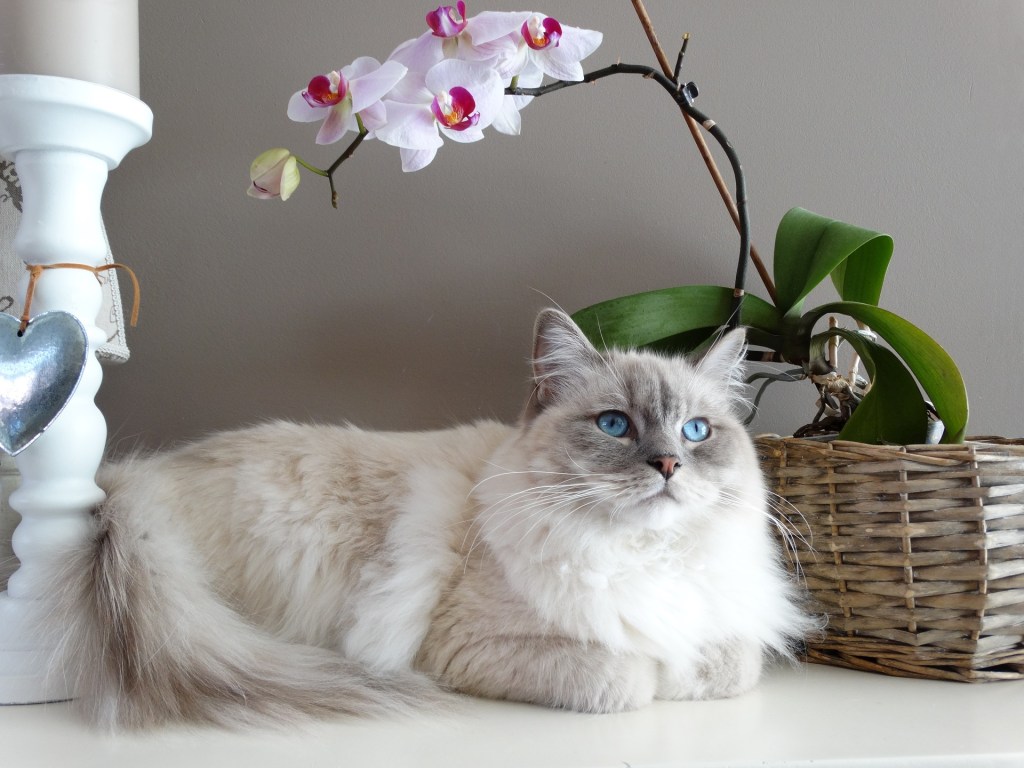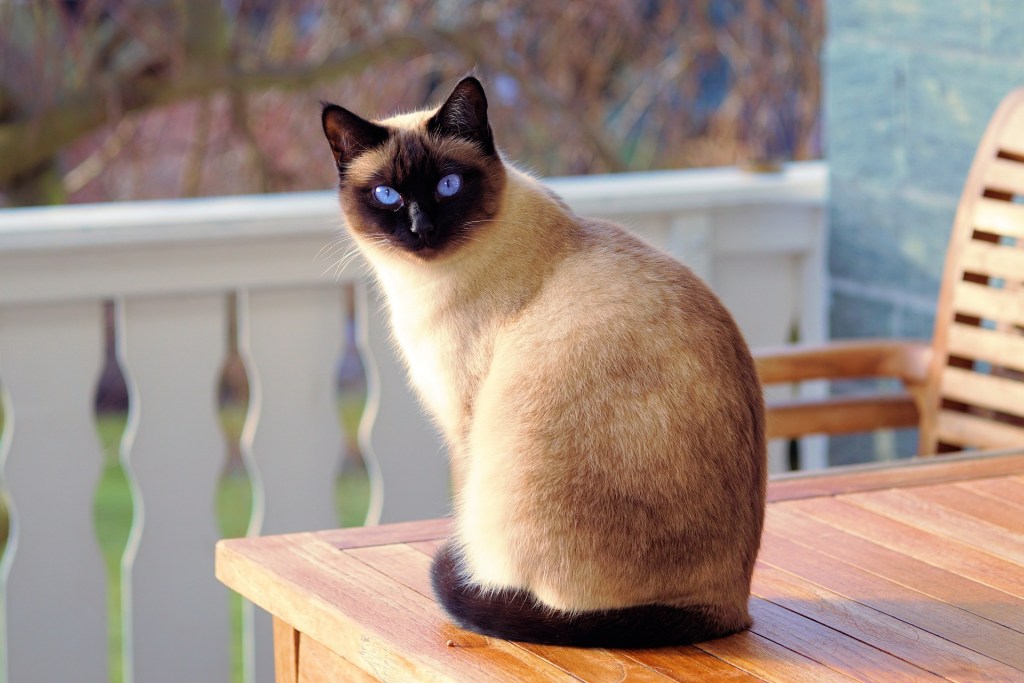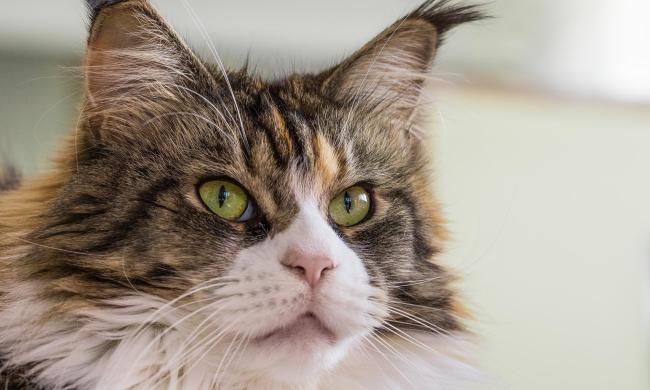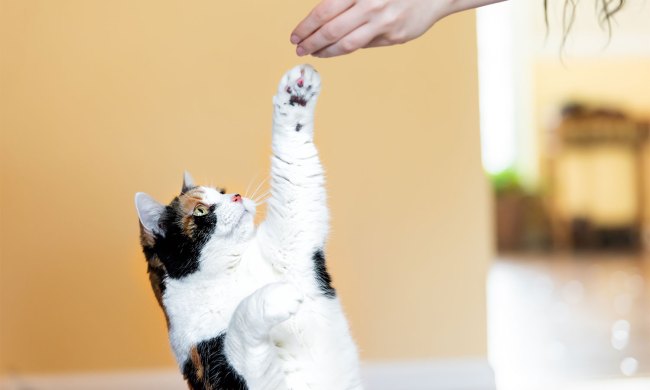One of the great benefits of having a cat in your home is their companionship. While cats have earned a reputation as being standoffish and aloof, that doesn’t apply to every cat. In fact, many cats are highly social and enjoy spending time on your lap, cuddling against you as you sleep, and following you around the house. Some people believe that certain breeds are more social than others and that choosing one of the more affectionate cat breeds will increase the chances of your cat being social and cuddly. Teresa Keiger, a Cat Fanciers’ Association judge, told Reader’s Digest that several cat breeds are highly affectionate.
Ragdoll
Ragdolls are larger, super-friendly cats. They’re known for their easygoing nature and their impressive, fluffy coats, and stunning blue eyes. These cats also tend to be more interested in human interaction than other breeds. Both males and females tend to be very friendly. Keep in mind that they can also get large—males weigh an average of 20 pounds. While that’s a lot for a lap cat, ragdolls are highly social and usually also enjoy hanging out near you and following you around the house as you complete your chores.

Maine Coon
These giant cats often deliver big affection, too. With males averaging 15 to 25 pounds and females coming in at between 10 and 15 pounds, these cats are the size of small dogs, but they’re unaware of their size. Maine Coons love to spend time with their families and tend to be easygoing. They often enjoy spending time in laps, and best of all: their beautiful long coats will keep you cozy on chilly nights.
Russian Blue
The Russian Blue stands out not only because of their unique appearance but also because of its loyalty to its family. This unique breed might appear to be standoffish at first, but once your cat realizes you’re family, he’ll bond strongly. The Russian Blue has a striking silver-blue coat paired with green eyes that make for a stunning appearance.
Siamese
Siamese cats may be known for their talkative nature and unusually loud meows, but they’re also highly affectionate. Siamese cats tend to be very social and enjoy spending time with people. If you leave the room when your cat’s not ready for the cuddle session to be over, you’ll be sure to hear about it—loudly. Siamese cats often have loud purrs, making them fabulous and relaxing lap cats.

A note about individuality
Dr. Mikel Maria Delgado told Newsweek that simply getting a cat breed that’s believed to be friendly won’t guarantee that you end up with a super-social cat. While some owners of purebred cats do report differences between the breeds, studies found varying results when it comes to the friendliness of different breeds. Simply basing your decision to get a cat off of its breed and not taking into account that each cat is an individual could be a mistake and might make you overlook a cat who would be the perfect fit for your family.
Instead, it’s most important for you to meet and spend some time with the cat that you’re interested in adopting or buying. If you’re adopting a cat from a rescue and that cat has been with a foster family, chances are the rescue group will have some idea of the cat’s personality and friendliness. If you’re planning to buy from a breeder, make sure to have a discussion about the traits that are most important to you. Responsible breeders work hard to match their animals with appropriate homes.
Patience is key
Even if your cat isn’t immediately affectionate and social, you don’t need to give up hope right away. Remember that even the friendliest cat will need some time to settle in and get to know you. Cats who haven’t had positive experiences with humans before may take an especially long time to get comfortable. You can help your cat learn to trust and enjoy spending time around you by learning to read his body language and respecting his boundaries. It might be tempting to try to snuggle with your cat immediately, but instead, let your cat move at his own pace. Establish trust by feeding him, gently patting him, and playing with him, and you’re likely to have a friend for years to come.


